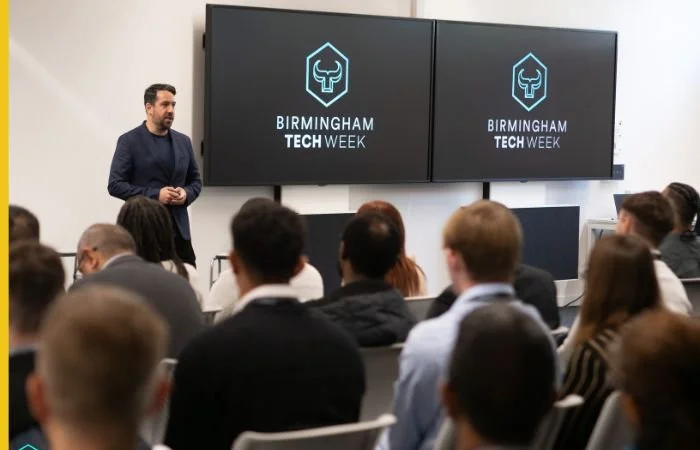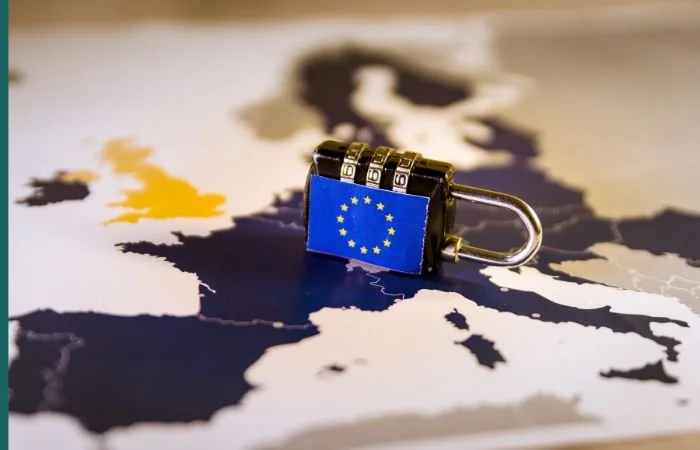SME guide to renewable electricity

This month, for the first time ever, a new record was set where over 50% of the UK’s electricity demand was met from renewable sources. The power industry has come a long way in reducing its carbon footprint in recent years, with other traditional sources still contributing largely to Britain’s power demand. It may not be surprising that coal still produces 9% of Britain’s electricity, but due to the amounts of carbon dioxide released during its combustion, other types of renewable sources are being invested and are starting to dominate fossil fuels and nuclear power.
This record has been a result of the industry’s investment in renewable sources, Government regulations (such as the carbon tax) and in a small, but increasingly important way, a demand from SMEs for renewable power. But how can small businesses that lack procurement and sustainability departments understand the different forms of renewable electricity available and how can they make the right choice that will best suit their business?
What is renewable electricity?
Let’s talk first about what renewables actually are. Renewable electricity is sourced from naturally occurring sustainable resources that will be replenished over time. There are many different sources of renewable electricity and some are weather dependent and require another source to ensure a consistent supply. The sources that are more likely to be offered by your energy provider are; solar, biomass, wind or hydropower.
For many SMEs, the terms used when discussing renewable electricity can be confusing. For example, when looking into switching to renewables, the issue of intermittency is often raised. Intermittent sources of power, such as the wind and the sun, are becoming increasingly predictable as weather forecasting improves. But due to wind and solar farms’ reliance on favourable weather conditions, their power needs to be supplemented by other sources to ensure a continuous supply. This could be flexible fossil fuels such as coal or gas, or responsive renewables such as biomass. ‘Grid parity’ is also likely to come up to describe when a new technology can produce energy for the same cost as existing, traditional power sources rather than requiring government support to make them viable. Ultimately reaching grid parity is important for renewables, as this is when they will be able to truly compete with other more established forms of power generation.
Why renewable?
According to our research more than 72% of SMEs want their energy providers to be more committed to renewable energy. With increased awareness of renewables and discussions becoming more focused on climate change, it is no surprise that more businesses are considering energy as a strategic focus - with more than 80% are placing an increasing value on where their energy comes from. Certainly switching to renewable electricity can be good for SMEs in terms of their Corporate Social Responsibility (CSR) but, they should also be interested because of how quick and easy it is to switch. There are also the financial benefits attained through energy-efficiency programmes, such as smart meters which allow businesses to see what they’re using and when, and how much it’s costing them. They can use this information to adjust their usage accordingly and help them save money.
Responsible business
SMEs who are taking an active role in reducing their energy consumption and switching to a more renewable source are demonstrating a high level of corporate citizenship according to a report published by Bain & Company. With an increase in their overall corporate responsibility, business can reap the benefits of a stronger corporate image, improved public perception and even make the business more attractive to investors and of course new employees.
Small businesses, however, are unlikely to have a full time resource to look after their corporate social responsibility programme (and let’s be honest this won’t always be front of mind), but by using renewable electricity they can boost their sustainability credentials, and contribute to a CSR programme without having to spend a lot of their valuable time on the process. Given we know time is of the essence for SMEs, this can be no bad thing.
Saving time
And talking of saving time…we know that most SME owners are often very keen for more time as they have a very broad spread of responsibilities to take care of. By making the switching process simpler and quicker this not only helps Haven Power’s journey towards a lower carbon Britain but can give SMEs valuable time back! From our own research we can see SMEs are now only spending six minutes a year engaging with their energy providers, less than lining up for your daily coffee. This means they can spend time on what they really need to be doing – running a business.
Saving money
We know that SMEs want to be responsible – rather than only making money. The first step towards being a responsible business and reducing carbon emissions, starts with us supporting businesses in helping them to use less energy and as a result, spend less. The Bain report says that by adopting an energy efficiency programme, businesses can save up to 30% on energy costs within three years.
We are experiencing a moment of unprecedented change for the energy market, with more providers, businesses and the Government pledging to be more environmentally responsible, renewable electricity needs to become a crucial consideration for all SMEs. With all the innovations in renewable electricity, it is now the time SMEs can afford to look at switching to a renewable package. The end goal of becoming a lower carbon Britain with a growing, dynamic economy is not the only journey we are on at Haven Power. We also want to help businesses to understand how they can be more energy efficient, help them regain control and spend less on their electricity.
It was more of a gut feeling that led us to the intersection of digitalisation, mobiles and the democratisation of payments. Paynetics felt strongly about making moving and managing money right for everyone and started building a platform that covers it all.
I’m Simon Goodman and I started out in PR, where I was introduced to the noble Choc Ice working on the Cadburys account. At the time they were looking to upgrade the humble choc ice.
In 2017, Matt launched Borrow A Boat, aka the ‘Airbnb’ of boats, making waves in the charter industry by offering a modern marketplace solution with the aim of making boating more accessible, affordable, flexible and inclusive for all.
Founded in 2021 by Alisa Patotsakaya, Immersive Fox is a text-to-video generation startup that specialises in providing businesses with AI-generated videos for sales and customer communication.
Samantha Gilchrist, co-founder and CEO of The Gilchrist Collection, shares her life as an entrepreneur.
Co-founded by Conrad Poulson in 2014, Huq has been at the forefront of utilising cutting- edge technologies and innovative mobility research methods.
Going from employee to founder was a huge leap of faith. I announced the agency just a few days after turning 26 and like most 26-year-olds, I hadn’t ever owned or run a business before.
Patchwork Health was co-founded by Dr Anas Nader and Dr Jing Ouyang with the mission to make truly flexible and sustainable working a reality for all healthcare staff, amid the current workforce crisis.
After a lifetime working as a project manager for some of the world’s largest tech companies, Jeb Buckler set up Startup Giants PLC to ensure that no good tech concepts should go to waste.
So, I encouraged Ben to officially incorporate The Handbag Clinic as its own independent luxury handbag offshoot in 2013 – all still operated through our ecommerce platform at the time.
I’m Diana Babics, founder of Nourish Awards. I began in finance (accounts and auditing) before deciding this simply wasn’t for me. I then headed off to university as a mature student, initially to study art and design and latterly interior architecture.
greenworkx is co-founded by two education sector workers, Mat llic and Richard Ng, who are passionate about the planet and believe reskilling and upskilling UK workers into green jobs is future-proofing the economy.
Blaise Hope, founder and CEO of Origin Hope, brings two decades of media experience to his groundbreaking content partnership venture.
Co-founded by Nisha Ramisetty and Sam Williams, the idea for Naksha was born in 2020 when cooking became an escape during lockdown.
Charlene Hurlock was inspired by her daughter and her best friend who independently started swapping their pre-loved clothes. Aside from being a Mum, Charlene's background is predominately in global exhibition sales and media advertising.
In North America, Iced Teas (Coldbrew) is a bustling £2bn marketplace. Yet, in the UK, despite being the second fastest-growing soft drink sub-category (after cold brew coffee), there is still a lack of appreciation for brands like Kaytea.
I’m Melissa Gauge, founder of SpareMyTime. I left my corporate role in 2016 to set up a City-based business with a couple of partners and another business by myself, an online platform.
Founded in 2006 by Amelia Peckham and Clare Braddel, Cool Crutches & Walking Sticks aims to empower those who need support to walk.
I’m Gerry Lianos - the co-founder of Raffolux, an online raffling platform that gives people the chance to win amazing prizes for a low cost and support charities close to their hearts.
Jason Tim is the CEO and co-founder of CloudSmiths and has been CEO for the past two years. Prior to this, he held previous roles at the company such as Managing Director and Sales Director.
My name is Lucy Bramley and I'm the founder of Ruched & Ready, one of the UK's leading size inclusive fashion labels helping women embrace their curves and feel confident.
KBF Enterprises was established in 2008 by Managing Director, Kieran Fisher and is the business behind two of the most recognised sports nutrition brands in the UK – Bodybuilding Warehouse® and Warrior®.
Matt Cater is co-founder of Clix Technologies, an innovative new company that offers the UK’s only mobile-first, fully customisable, Web App-based smart lockers.
Ben Maruthappu is a London-based doctor and CEO of Cera, a multi-award winning digital-first home healthcare company, which has grown 100-fold in the past three years, now delivering over 50,000 patient appointments a day.
The Natural Love Company was founded by friends and wedding photographers Ben Foster and Barney Walters. The Cornwall-based business was launched as a result of their previous careers being put on halt by the pandemic.
As the CEO of Botify, Adrien has had both a global and notable career, co-founding Botify back in 2012 and thereafter relocating to the United States from France. Adrien is passionate about shifting the organic search marketing landscape.
Sançar has spent years leading marketing teams at high-profile startups, including Typeform and Hotjar. Early in his career, he struggled to set work-life boundaries and lacked a clear understanding of his personal wellbeing needs and values.
Co-founded by Mike Robertson and Adrian Brown, AbbeyCross is the world’s first B2B trading and compliance marketplace, focused on improving underlying market infrastructure for Emerging Market (“EM”) currencies.
My name is Derk Roodhuyzen de Vries and I am the CEO and co-founder of Fixico. Alongside my business partner Mark van Laar, we created Fixico back in 2014 to revolutionise the car repair industry.
Linkup was founded by the two Manchester-based entrepreneurs, Jack Peagam and Ben Whatson, as they aim to step away from ‘traditional' career paths and combine their shared passion for creativity with business.
Emilie Vallauri is a 27-year-old program manager at Techstars with a passion for innovation. Born and raised in Nice, France, Emilie studied business and political sciences before embarking on a career punctuated by innovation and supporting startups.
Zsuzsa has been instrumental in growing Antavo from a startup to a scaleup. As Chief Strategy Officer and co-founder, she is transforming the company into a unique loyalty technology vendor, offering a next-gen, best-in-class solution to the loyalty sector.
Software engineering and product development is my specialisation - and I have had a wide range of experience across the industry. I had a brilliant 22-year long career at IBM, working across a number of roles, which I really loved.
Holly Zoccolan is an entrepreneur and Founder of new parenting app, Carol. Before Founding Carol and entering the tech space, Holly built successful online wellness brand The Health Zoc in 2016.
Anna Gudmundson is the CEO and co-founder of Sensate, a device that emits infrasonic waves that are synchronised to resonate with the specially composed hemispheric audio in the app.
Rebecca is Senior Vice President of Clients, Partnership and Creative Transformation at CreativeX, provider of an industry-first AI driven data platform to help the world’s most loved brands including PepsiCo, Nestle and Facebook achieve creative excellence.
With this investment, Uvionix will accelerate its product release and expand its market presence across the US and Europe.
The company's technology will have innovative applications in infant nutrition, cosmetic and dermatological, and cognitive industries.
This funding will accelerate Mulder’s mission to tackle the transparency and compliance challenges that complicate the medical device supply chain.
Tangible, a software platform for decarbonizing construction has raised $3 million in a funding round co-led by Prologis Ventures and Pi Labs. Additional investors include Foundamental, Silence VC, and RE Angels.
DBLX, led by CEO and Co-Founder Nicky Hoyland, collaborates with global enterprises to enhance their people experiences. The company’s offerings include immersive digital content, bespoke platform development, and strategic consulting services.
Apheris, the leading federated computing company powering data networks for the life sciences sector, today announced the completion of a Series A funding round, bringing total funding to date to $20.8 million.
Co-investors on deals during 2024 included Investment Fund for Scotland (managed by Maven Capital), Scottish National Investment Bank, Old College Capital, Scottish Enterprise, Par Equity, Mercia and various Scottish angel syndicates.
This funding will propel Criterion Capital's vision of redefining hospitality with its sleep-centric, design-forward hotel concept.
The theme of this year’s BBBAwards is #NEXT. Now in its 11th year, the BBBAwards is marking a new decade of celebration of the outstanding achievements of Black professionals and entrepreneurs in the UK.
Aistetic, a groundbreaking Oxford University AI spinout, has proudly announced its participation in the Techstars Future of Ecommerce Accelerator powered by eBay, a highly competitive program designed to help shape ecommerce.
An alarming new study of workplace leaders describes an environment of unconscious fear in modern-day leadership, leading to toxic culture, stunted growth, performance and productivity, and decision inertia.
Mambu, a leading Software as a Service (SaaS) cloud banking platform, today announced it is now available in AWS Marketplace, making it one of the first core banking providers on the site.
Bengalis have been rewarded and acknowledged for their substantial contribution to healthcare, finance, politics, education and the arts.
Retail PR will be working with COOK in the lead up to Christmas, helping to support their PR objectives throughout the golden quarter.
A new cohort of six GeoTech and PropTech start-ups has just been selected to start on its Accelerator Programme.
In 2020, data confirmed that there are 1,223,850 tonnes of waste disposed in the ocean, with future predictions standing at a rise of 60% by 2030, 147.4% by 2040 and 274% by 2050.
A growing social enterprise supported by a global network, Impact Hub London Euston at Regent’s Place will offer under-served local communities affordable workspace and tailored business support, as well as arranging impactful engagement activities throughout Camden.
Phil Race appointed as Chief Executive as Jim Darragh steps down after seven successful years of leadership.
Appointment of product management leader, Phillip Burr, to bring Lumai’s game-changing AI technology to market across all regions.
New data released from Tech Climbers has revealed how Greater Manchester’s tech sector continues to thrive, as companies plan to attract millions in investment.
Appointments of Joel Cardenas as the new Head of Business Development for Latin America, and Ard Crebas as the new Head of Business Development for North America and the Caribbean.
Fastest growing modern-day learning management system, Thrive Learning, has announced a number of new appointments within the team as part of their ambitious growth plans.
Ai Build, the Additive Manufacturing (AM, also known as 3D printing) software company, has raised a Series A round of $8.5 million led by IQ Capital.
The Board of Arbuthnot Banking Group PLC ("Arbuthnot", the "Company" or the "Group") provides the following update regarding the trading performance of the Group for the three months to 30 September 2023.
The partnership enables service providers worldwide to access the UK network footprint with location-based intelligence and automated and standardised quoting.
EDHEC Business School and Ring Capital are proud to announce the creation of GENERATIONS Powered by EDHEC, an impact seed fund for socially- and environmentally-responsible startups.
Birmingham Tech Week 2023 is set to be the biggest in the event’s four-year history, with 7,500 people estimated to attend across five days.
John joins Arbuthnot Latham from Hampden & Co plc, where he was a Business Development Director and built strategic partnerships with private client advisors.
Sodexo Engage, the leading expert in employee engagement, today announces the launch and UK implementation of its new brand, Pluxee.
The company, founded by tech industry veteran Tom Dunning, has also seen its headcount jump from 15 to 26 full-time staff, with plans for additional key hires in the next year.
Five sustainable gaming companies that provide great inspiration to startups wanting to do good in the world.
From 31 January, businesses moving goods from the European Union (EU) to Great Britain (GB) will need to comply with new UK safety and security declaration requirements.
Its simplicity has made transitioning from traditional tobacco to vaping a breeze for many.
Bitcoin, the digital currency conceived in 2009 by the mysterious Satoshi Nakamoto, is a financial phenomenon. Despite the volatility of global markets, it has demonstrated remarkable resilience.
From university students and young entrepreneurs to senior executives, imposter syndrome remains a common thread in everyone’s personal career journey.
Seeing your ideas materialise, working for yourself, leading others, and becoming a CEO might seem like a dream come true, and indeed, it is for many.





































































































